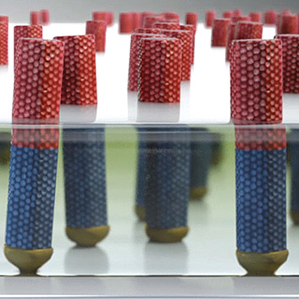Nanowire inks are expected to improve solar cell conversion efficiency
Recently, Sol Voltaics, a Swedish company, announced that incorporating nanowire inks into solar panels could boost their efficiency by up to 25% without significantly increasing production costs. This advancement has the potential to make solar energy more affordable and accessible.
The company is focusing on a novel method to extract nanowires from gallium arsenide (GaAs), a material known for its superior performance in solar cells compared to silicon. However, GaAs has been expensive to produce and use. Sol Voltaics aims to change that by developing a cost-effective way to utilize this high-performance material.
According to the company's approach, nanowires are suspended in liquid and applied to surfaces with their ends facing upward—similar to how grass or beard hairs stand upright. This technique allows for the generation of electricity using less gallium arsenide than traditional methods, potentially reducing material costs while improving performance.

David Epstein, CEO of Sol Voltaics, explained that just under one gram of material is needed to cover a square meter. This ultra-thin layer can be applied to glass or existing solar panels, enabling them to generate more power from the same surface area.
A 25% increase in efficiency means that fewer panels would be required to produce the same amount of energy, or the same number of panels could generate more power. For example, a 200-watt panel could effectively become a 250-watt panel after applying this technology. While initial costs may be involved, the long-term benefits make it a worthwhile investment.
Sol Voltaics was founded by Professor Lund Samuelson, a leading figure in nanotechnology at Lund University in Sweden. His research is based on a process called "aerotaxy," which differs from traditional methods used in semiconductor manufacturing.
In conventional processes, materials are deposited onto fixed surfaces like silicon wafers using gases. Aerotaxy, however, involves forming nanowires on gold nanoparticles as they flow through a gas-filled chamber. These nanowires are then collected and stored in a liquid form suitable for inkjet printing or other applications.
Although Sol Voltaics doesn’t manufacture solar panels itself, it plans to establish factories to produce and sell these nanowire inks to existing manufacturers, helping them enhance the efficiency of their products.
"We call it ink, and we will become an ink factory," Epstein said, emphasizing the company’s vision of supplying a new kind of material to the solar industry.
To date, Sol Voltaics has demonstrated solar cells made from indium phosphide nanowires. The company aims to showcase GaAs-based solar cells by the end of 2013 and begin large-scale commercial production by 2016.
So far, the company has raised $11 million from Swedish investors and plans to raise an additional $10–$20 million this year. It estimates that at least $50 million will be needed to start mass production and scale up operations.
Bathroom Accessories
Bathroom accessories encompass a lots of items that can enhance the functionality of a bathroom, like space utilization, storage layout and aesthetics. These accessories are practical and functional, like towel warmer, bath niche, dispenser and more.Â
Shower Accessories,Bath Fittings,Home Bathroom Accessories
Jiangmen MEIAO Kitchen And Bathroom Co., Ltd. , https://www.meiaosink.com